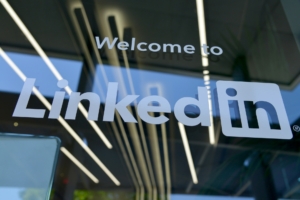Don’t Wait for Rates
 At the beginning of 2024 the market was led to believe that there would be multiple rate cuts. Yet the Fed met in early June and there hasn’t yet been one (though one, and one only, is forecast before the end of the year). Instead, Fed Chairman Jerome Powell has kicked the ball into the long grass, claiming that “rate cuts that might have taken place this year, take place next year.” What does that mean for buyers and sellers in the small business marketplace?
At the beginning of 2024 the market was led to believe that there would be multiple rate cuts. Yet the Fed met in early June and there hasn’t yet been one (though one, and one only, is forecast before the end of the year). Instead, Fed Chairman Jerome Powell has kicked the ball into the long grass, claiming that “rate cuts that might have taken place this year, take place next year.” What does that mean for buyers and sellers in the small business marketplace?
Don’t Fixate
Sellers have been known to wait for the “perfect time to sell,” and we can tell you from many years of experience that such timing rarely occurs. What makes more sense is “the right time to sell” and that’s grounded in circumstances that both buyers and sellers have real control over. Searching for perfection can often lead to disappointment in life, not just in buying and selling businesses.
What we’ve seen in the last 12 months, as the federal funds rate has stayed in the 5.25-5.5% range, the highest in 23 years, is that there are still good buyers chasing good businesses. Because their primary goal has been to capture a great business, they have looked for that first and then worked on financing after identifying the right business. In certain circumstances, given the current rate climate, we’ve seen some flexibility from sellers given expected cash flows in relation to higher bank loans.
If, however, potential buyers are waiting on the sidelines for the “right rate” they should keep in mind that others may think this way as well, and when they wade back in when “rates are right” they might get caught in a bidding war for a business, leading any “savings” from “waiting” to turn into a premium they end up paying.
Trust the Market
That leads us to our second point. Whatever your thoughts on politics and government, many would agree that when the Fed is seeking to intervene it’s trying to adjust for something that is already happening.
Yes, there is much uncertainty in the world at the moment, and domestically, it’s an election year, but we can only report to you what we are seeing and hearing, and that is that businesses are being bought and sold. 2023 was our best year ever at Apex and midway through this year we feel confident that we are going to have another good year.
A solid business doesn’t rise or fall based on interest rates in the market. The same goes for when you buy a business. If it’s a solid business at this time, it will be whether rates go up or down. And as we’ve said (and seen) if the business is a good fit, a seller might be willing to make a concession on price to help make the financing work for serious buyers.
As we said, serious buyers are interested in the right business, not the perfect interest rate.
Thinking of coming off the “interest rate” bench? We’d love to talk to you about what’s available right now. Give us a call.

 We recently talked about
We recently talked about  Those of us of a certain age remember that gas didn’t always cost more than a dollar, and the only things you’d find if you went inside a gas station to pay were auto maintenance products and some of the worst coffee in the land.
Those of us of a certain age remember that gas didn’t always cost more than a dollar, and the only things you’d find if you went inside a gas station to pay were auto maintenance products and some of the worst coffee in the land. Many Americans have come to realize that the economy of today moves lightning-fast and can change in an instant. Because of this, many workers have started looking for
Many Americans have come to realize that the economy of today moves lightning-fast and can change in an instant. Because of this, many workers have started looking for  It’s no secret that
It’s no secret that  LinkedIn is a tool that can
LinkedIn is a tool that can  The end of the year can be very hectic for business owners. They spend their time ensuring their projects get completed, customers get billed, and that there is enough time left to spend with family and friends. One task often overlooked during December is an end-of-year adjustment for tax strategy. Optimizing the business’s financial position for the coming year while minimizing its tax liability is a critically overlooked opportunity. With that tax strategy, consideration must also be given to how it may affect the viewing of the financial reports for the business. Potential buyers will want to know that the business is fiscally strong and that the tax history and reporting are accurate.
The end of the year can be very hectic for business owners. They spend their time ensuring their projects get completed, customers get billed, and that there is enough time left to spend with family and friends. One task often overlooked during December is an end-of-year adjustment for tax strategy. Optimizing the business’s financial position for the coming year while minimizing its tax liability is a critically overlooked opportunity. With that tax strategy, consideration must also be given to how it may affect the viewing of the financial reports for the business. Potential buyers will want to know that the business is fiscally strong and that the tax history and reporting are accurate. No matter how small or large a business may be when starting up, it will always face the question of how to get more awareness for its brand. Most companies lack substantial marketing or advertising budgets to begin with. They find their customers in the most organic way possible through one-to-one outreach. What happens when that route has grown stagnant?
No matter how small or large a business may be when starting up, it will always face the question of how to get more awareness for its brand. Most companies lack substantial marketing or advertising budgets to begin with. They find their customers in the most organic way possible through one-to-one outreach. What happens when that route has grown stagnant? The small business owners of today must wear many hats. Even with the introduction of
The small business owners of today must wear many hats. Even with the introduction of  We may not think about it too often, but there’s a lot of planning that goes into making sure Americans have chicken, beef, and pork waiting for them when they walk into grocery stores to buy. The pandemic threw a curveball at US producers, who didn’t want to miss out on current demand but also needed to forecast into the future. One of those producers who’ve been getting a lot of attention recently is Tyson. We’re going to take a look at the multiple factors affecting their performance and what we as small business owners can learn from a big business like theirs.
We may not think about it too often, but there’s a lot of planning that goes into making sure Americans have chicken, beef, and pork waiting for them when they walk into grocery stores to buy. The pandemic threw a curveball at US producers, who didn’t want to miss out on current demand but also needed to forecast into the future. One of those producers who’ve been getting a lot of attention recently is Tyson. We’re going to take a look at the multiple factors affecting their performance and what we as small business owners can learn from a big business like theirs.